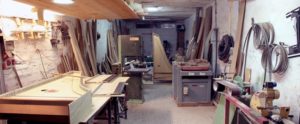I build reproductions of existing harpsichords sited in museums and private collections. I reproduce those that are well known and recognized as being the best instruments of the Baroque period. Some of them may include a variation of the compass of the original version. The only other changes can be an added transposition space and a delrin plectra.
I reproduce historical harpsichords because they are the best instrument one can have. I build harpsichords following the original features as in the properties of the design, materials, elements of the inner-structure, the shape of the joints and the mechanic parts together with its construction and tolerances.
Among the most renowned historic harpsichord builders are the Ruchers and the Couchet families. Their harpsichords are regarded with the highest value throughout each era. Their instruments are fabulous because of their pleasing powerful sound, their reliable mechanics, stability and good wear. These families produced thousands of harpsichords shipping them all over the western world for more than 100 years. All without significant differences from the earlier models to the final.
Acoustically in the design of these instruments everything is taken to the optimum state, from string scalings, sizes of bridge, soundboard thickness to frame and case construction. The considerable tension of the strings, around 700 Kilograms depending on the instrument, is taken to the outside of the case, a self-tightening isostatic structure with limited amount of components. The typical Ruckers case joint or «Ruckers joint» is one of the key design features of this harpsichords, inside few boards helps to hold the tension making the vibration embrace a larger area, therefore the instrument becoming louder and producing longer sustained notes .
The Keyboards, registers and jacks in the Ruckers- Couchet instruments are created from a perfect design with very tight tolerance, often it is no more than a 1/10 of a mm but yet it allows for humidity expansion of the wood, resulting in a silent and very consistent mechanic action.
I only use traditional hide-bone glue for the gluing process of particular pieces of the instruments. Bone glue offers many advantages, one of most importance is that when dry, it is very hard and holds under continuous stress without creeping. This is very important acoustically because when other glues are used, very often the structure has to be reinforced killing the sound in doing so. Bone-hide glue is also used as a sealer with gesso or without it, or as an agglutinant for pigments used in the decoration of the harpsichord.
When the harpsichord has painted decoration, it receives a finishing coat of clear shellac coating. When it is just the natural wood, the finish is of linseed oil or shellac.

Comentarios recientes